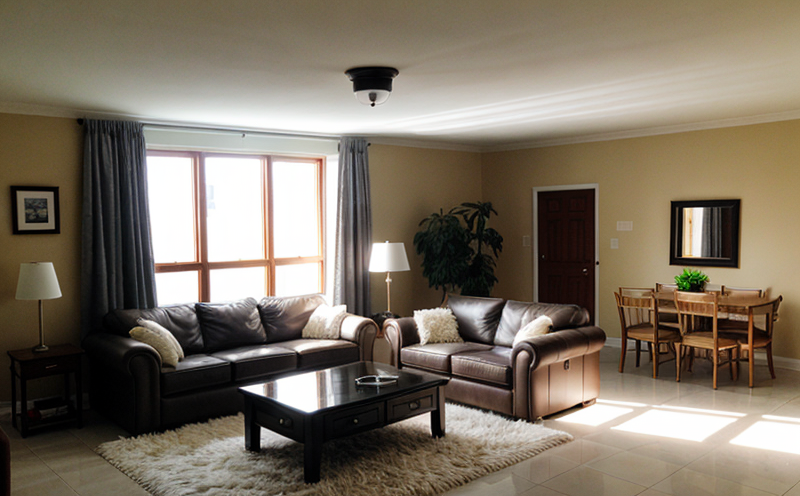IEC 60068 2 1 Cold Condition Indoor Lighting Endurance Testing
The IEC 60068 2 1 standard specifies procedures to determine the cold endurance of electrical equipment, including indoor lighting fixtures. This test is crucial for ensuring that luminaires and related products withstand low temperatures without compromising their performance or structural integrity.
During this testing, specimens are exposed to a defined cold condition environment for a specified duration under controlled conditions. The primary goal is to evaluate the long-term effects of cold exposure on the luminaire’s physical structure, electrical components, and overall functionality. This test ensures that the lighting products meet safety standards and maintain their performance in various environmental conditions.
Indoor lighting fixtures subjected to this test are typically exposed to a temperature range between -20°C to -40°C for a minimum of 72 hours. The test simulates real-world scenarios where these luminaires might be used, ensuring that they meet the required performance levels under such conditions.
The testing process involves several critical steps:
- Preparation of the luminaire specimen in accordance with IEC standards.
- Placement of the specimen in a controlled cold chamber at the specified temperature range for the duration of 72 hours.
- Monitoring and recording environmental conditions throughout the test period.
The success criteria for this test are based on the luminaire's ability to retain its performance characteristics, electrical connections, and structural integrity after exposure. The luminaire must continue to function as designed without any significant degradation in performance or safety concerns.
| Parameter | Description |
|---|---|
| Temperature Range | -20°C to -40°C |
| Duration | 72 hours |
| Environmental Monitoring | Continuous temperature and humidity monitoring during the test period. |
| Performance Criteria | Luminaire must maintain its performance characteristics, electrical connections, and structural integrity without significant degradation. |
This testing is essential for manufacturers to ensure that their products can withstand cold environments, thus providing reliable lighting solutions in various industrial, commercial, and residential settings. By adhering to IEC 60068 2 1 standards, manufacturers can comply with international regulations and standards, ensuring the safety and reliability of their products.
Why Choose This Test
The IEC 60068 2 1 Cold Condition Indoor Lighting Endurance Testing is a critical step in ensuring that indoor lighting fixtures are robust enough to operate effectively in cold environments. Here are the key reasons why this test should be chosen:
- Compliance with international standards: This testing ensures compliance with IEC 60068-2-1, which is widely recognized and adopted globally.
- Rigorous environmental simulation: The test simulates real-world cold conditions, ensuring that the luminaire can withstand these harsh environments without performance degradation.
- Enhanced product reliability: By subjecting the luminaire to this testing, manufacturers can identify potential issues early in the development process and make necessary improvements.
- Increased market competitiveness: Products that pass this test are more likely to meet customer expectations and exceed industry standards, providing a competitive edge in the marketplace.
The rigorous nature of this test ensures that only the most reliable and durable luminaires can pass. This not only enhances the reputation of manufacturers but also provides peace of mind for end-users who expect consistent performance from their lighting fixtures.
Competitive Advantage and Market Impact
The IEC 60068 2 1 Cold Condition Indoor Lighting Endurance Testing offers significant competitive advantages and market impacts:
- Enhanced Product Quality: By ensuring that the luminaire can withstand cold conditions, manufacturers can provide products of superior quality, differentiating them in a crowded market.
- Increased Market Acceptance: Products that meet or exceed IEC standards are more likely to be accepted by regulatory bodies and end-users, leading to increased market acceptance.
- Improved Customer Satisfaction: Reliable products that perform consistently under cold conditions lead to higher customer satisfaction and loyalty.
- Better Brand Reputation: A proven track record of compliance with international standards can significantly enhance a brand's reputation in the lighting industry.
The results of this testing contribute to market impact by ensuring that only high-quality products enter the market. This not only benefits manufacturers but also contributes to the overall reliability and safety of indoor lighting fixtures across various sectors, including commercial buildings, industrial facilities, and residential homes.





